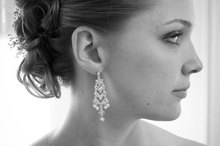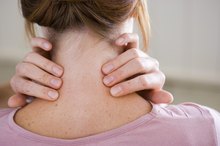What does fact checked mean?
At Healthfully, we strive to deliver objective content that is accurate and up-to-date. Our team periodically reviews articles in order to ensure content quality. The sources cited below consist of evidence from peer-reviewed journals, prominent medical organizations, academic associations, and government data.
The information contained on this site is for informational purposes only, and should not be used as a substitute for the advice of a professional health care provider. Please check with the appropriate physician regarding health questions and concerns. Although we strive to deliver accurate and up-to-date information, no guarantee to that effect is made.
Arnold-Chiari Syndrome Exercises
Arnold-Chiari malformation, or ACM, may also be referred to as cerebellomedullary malformation syndrome, Arnold-Chiari deformity, Arnold-Chiari syndrome, Chiari malformation or simply Chiari. It is a structural defect that affects the cerebellum, or the area in your brain that controls balance. Certain types of exercise should be avoided, but activities that help balance, headache and neck pain and stiffness are encouraged.
If you are experiencing serious medical symptoms, seek emergency treatment immediately.
Considerations
Just as experts use different terms to describe this syndrome, they also differ on the number of types of the malformation that are recognized. According to the Arkansas Spinal Cord Commission, there are three types. Comer Children's Hospital of the University of Chicago recognizes four types of malformations 2. This article will focus on type I which can go unnoticed in childhood until you begin to experience symptoms such as headache, neck pain and balance problems during adolescence or adulthood. Individuals with type II have symptoms that can be managed with medication and type III can result in permanent paralysis. Comer's also recognizes type IV, which is characterized by an absence of normal brain development. The type of ACM you have will dictate the exercises that are best for you.
- Just as experts use different terms to describe this syndrome, they also differ on the number of types of the malformation that are recognized.
- Comer Children's Hospital of the University of Chicago recognizes four types of malformations 2.
General Exercise
McKenzie Exercises for the Neck
Learn More
Before beginning any exercises, check with your health care provider or physical therapist for approval. Activities that prevent neck stress are essential. Walking is a good place to begin, but be sure to wear highly cushioned and supportive shoes to reduce neck and cerebellum pounding while moving. Cycling and aquatic exercises are also useful. According to neurosurgeon Jon Oro, M.D., any exercise that puts stress on your neck should be avoided. He suggests avoiding weightlifting and other exercises that require you to bend your neck down.
- Before beginning any exercises, check with your health care provider or physical therapist for approval.
- According to neurosurgeon Jon Oro, M.D., any exercise that puts stress on your neck should be avoided.
Brandt-Daroff Exercises
Since balance can be a challenge in type I ACM, an exercise routine called Brandt-Daroff may be useful to help improve your symptoms. Sit on your bed near the middle with your legs over the side. Lie down on your right side and turn your head to a 45-degree angle so that you are looking up at the ceiling. Hold this position until any dizziness symptoms pass. Sit up and look straight ahead for 30 seconds. Repeat the exercise by lying on your left side and repeating the steps. To avoid falling, ask someone to accompany you while you perform these exercises.
- Since balance can be a challenge in type I ACM, an exercise routine called Brandt-Daroff may be useful to help improve your symptoms.
- To avoid falling, ask someone to accompany you while you perform these exercises.
Cervical Exercises
Exercises for Cervical Facet Joint Pain
Learn More
Dr. Murray Grossman suggests that if you suffer from headaches, exercises that you perform when you are in the shower might help. But before you begin any exercises, discuss them with your health care provider who will determine if they are safe for you. Grossman suggests standing in the shower with the water directed at the back of your neck and shoulders. Slowly and gently turn your head as though you were attempting to look behind you. Do not over stretch your muscles or rotate your neck too far. Do not bend your neck down.
- Dr. Murray Grossman suggests that if you suffer from headaches, exercises that you perform when you are in the shower might help.
Related Articles
References
- Comer Children's Hospital, University of Chicago: Chiari Malformation
- American Syringomyelia & Chiari Alliance Project: Chiari Malformation
- University of Maryland Medical Center: Brandt-Daroff Exercises
- Vannemreddy P, Nourbakhsh A, Willis B, Guthikonda B. Congenital Chiari malformations. Neurol India. 2010;58(1):6-14. doi:10.4103/0028-3886.60387
- Udayakumaran S. Chiari V or Chiari II plus?. Childs Nerv Syst. 2012;28(3):337-8. doi:10.1007/s00381-011-1654-z
- National Institute of Neurological Disorders and Stroke. Chiari malformation fact sheet. Updated March 13, 2020.
- Arnautovic A, Splavski B, Boop FA, Arnautovic KI. Pediatric and adult Chiari malformation Type I surgical series 1965-2013: a review of demographics, operative treatment, and outcomes. J Neurosurg Pediatr. 2015;15(2):161-77. doi:10.3171/2014.10.PEDS14295
- Markunas CA, Soldano K, Dunlap K, et al. Stratified whole genome linkage analysis of Chiari type I malformation implicates known Klippel-Feil syndrome genes as putative disease candidates. PLoS ONE. 2013;8(4):e61521. doi:10.1371/journal.pone.0061521
- Fernández AA, Guerrero AI, Martínez MI, et al. Malformations of the craniocervical junction (Chiari type I and syringomyelia: classification, diagnosis and treatment). BMC Musculoskelet Disord. 2009;10 Suppl 1:S1. doi:10.1186/1471-2474-10-S1-S1
- Loukas M, Shayota BJ, Oelhafen K, et al. Associated disorders of Chiari Type I malformations: A review. Neurosurg Focus. 2011;31(3):E3. doi:10.3171/2011.6.FOCUS11112
- National Organization of Rare Disorders. Chiari malformations. Updated 2014.
- Frič R, Eide PK. Comparative observational study on the clinical presentation, intracranial volume measurements, and intracranial pressure scores in patients with either Chiari malformation type I or idiopathic intracranial hypertension. J Neurosurg. 2017;126(4):1312-22. doi:10.3171/2016.4.JNS152862
- Siasios J, Kapsalaki EZ, Fountas KN. Surgical management of patients with Chiari I malformation. Int J Pediatr. 2012;2012:640127. doi:10.1155/2012/640127
- Caffo M, Cardali SM, Caruso G, et al. Minimally invasive posterior fossa decompression with duraplasty in Chiari malformation type I with and without syringomyelia. Surg Neurol Int. 2019;10:88. doi:10.25259/SNI-70-2019
- Leschke JM, Mumert ML, Kurpad SN. Syringosubarachnoid shunting using a myringotomy tube. Surg Neurol Int. 2016;7(Suppl 1):S8-S11. doi:10.4103/2152-7806.173559
- Marreiros H, Loff C, Calado E. Who needs surgery for pediatric myelomeningocele? A retrospective study and literature review. J Spinal Cord Med. 2015;38(5):626-40. doi:10.1179/2045772314Y.0000000229
- Kennedy BC, Kelly KM, Phan MQ, et al. Outcomes after suboccipital decompression without dural opening in children with Chiari malformation type I. J Neurosurg Pediatr. 2015;16(2):150-8. doi:10.3171/2014.12.PEDS14487
- McDowell MM, Blatt JE, Deibert CP, Zwagerman NT, Tempel ZJ, Greene S. Predictors of mortality in children with myelomeningocele and symptomatic Chiari type II malformation. J Neurosurg Pediatr. 2018;21(6):587-96. doi:10.3171/2018.1.PEDS17496
- Bulut MD, Yavuz A, Bora A, Gülşen I, Özkaçmaz S, Sösüncü E. Chiari III malformation with a giant encephalocele Sac: case report and a review of the literature. Pediatr Neurosurg. 2013;49(5):316-9. doi:10.1159/000365661
Resources









